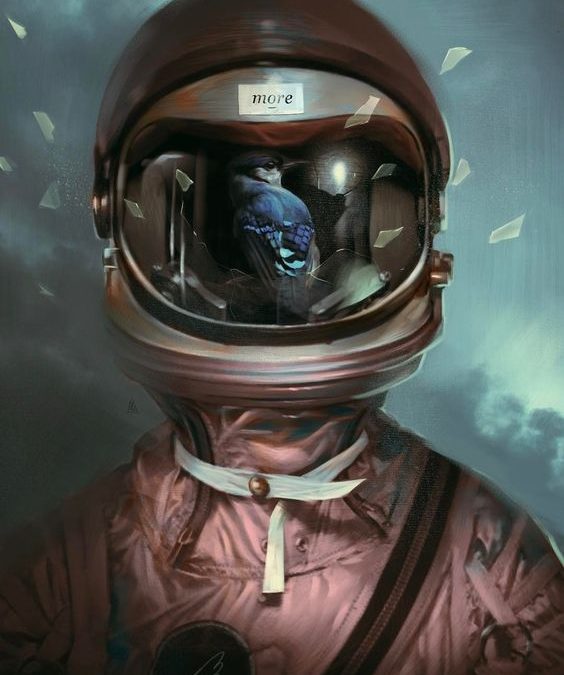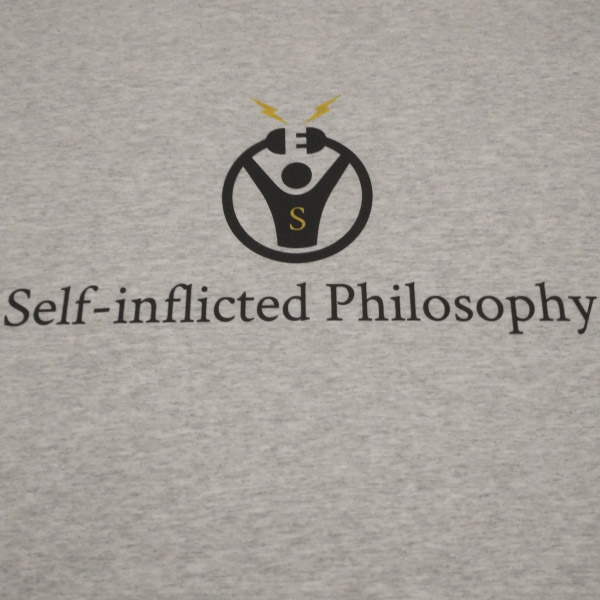By Gary Z McGee
“Antifragility is beyond resilience or robustness. The resilient resists shocks and stays the same; the antifragile gets better.” ~Nassim Taleb
Think of the human soul like a muscle. When you go to the gym to work out your muscles, you tear them down to build them up. This tearing creates scar tissue that increases blood flow to the muscle and makes you stronger. Similarly, the human soul (or character) can be torn down and built back up. The soul becoming stronger is the idea of antifragility and post traumatic growth.
It all comes down to comfort zone expansion. Muscle growth is to the tearing of the muscle as soul growth is to the stretching of the comfort zone. The comfort zone is the idle muscle of the soul. Without flexing it, without tearing it, without working it out, there can be no expansion. Thus, there can be no growth, no strength, and no flexibility.
We can apply this model to our perception of the world and use it to become antifragile. We can use it to go beyond merely resisting conflict and remaining the same. We can use it to get better, stronger, healthier. We can use it to go beyond resilience and discover antifragility.
Transform the fragility of PTSD into the antifragility of PTG (Post traumatic growth):
“The laws that govern circumstances are abolished by new circumstances.” ~Napoleon Bonaparte
Things do not necessarily happen for the best. However, we can make the best out of things that happen. It turns out that life is less about getting what we want and more about making the best of what we get. So be it.
We make the best of what we get by learning what pain, tragedy, and misfortune have to teach us. We transform pain into Professor, tragedy into Transcendence, and misfortune into Information. This is a powerful act that is the psychospiritual equivalent of looking at the glass half full rather than half empty. It’s making the best of it. And when we’re making the best of it, we’re already ahead of the curve and on our way toward antifragility.
If, as Rumi said, “the cure for pain is in the pain,” then pain becomes information that we can use to leverage meaning into our lives. The more meaning we’re able to create, the less painful meaninglessness becomes. As long as we’re able to learn from it, pain can be a steppingstone into providence. Seen in this way, pain can be an initiation into wisdom and a flourishing into Eudaimonia. This can be quite pleasurable. Which creates a kind of existential masochism that can help us square the circle of antifragility.
Pain, tragedy, hardship, misfortune, these are inevitable. They are a part of life. Avoiding them will just cause more of the same. Ignoring or repressing them will just cause unnecessary suffering. Although these are inevitable, unnecessary suffering is avoidable.
They can just as easily be a guide, a powerful teacher. And if we can gain the capacity to recognize the guideposts and learn the lessons they provide, we will be less likely to suffer unnecessarily and more likely to become adept at adapting. Which will make us more likely to grow into healthier versions of ourselves.
The SPIRE (Spiritual, Physical, Intellectual, Relational, Emotional) model:
“The greatest happiness you can have is knowing that you do not necessarily require happiness.” ~William Saroyan
Created by Tal Ben-Shahar, Ph.D., and Megan McDonough, cofounders of the Wholebeing Institute, the SPIRE model is a philosophy of living that teaches us that happiness comes from wholeness, and wholeness comes from attendance. More specifically, attending to the five equally important aspects of our life: Spiritual, Physical, Intellectual, Relational, and Emotional.
Most important of all, SPIRE has been shown to trigger the antifragile system. Let’s break them down.
-Spiritual: This is less about religion and more about spiritual self-conquest and the discovery of purpose and meaning through a core set of values in sacred alignment with universal laws. It is only by discovering our own set of values that we become valuable—valuable to ourselves, to others, to our community, and to the world. We do this through spiritual self-conquest, and by going on a Hero’s Journey that tests our character. This makes us antifragile by keeping our soul sharp against an uncertain universe. We gain the capacity to ask the tough questions: “does my path have heart?” “Am I living my best life?” “Does my life have depth, purpose, and meaning?”
-Physical: Exercise, sleep, and a healthy diet are foundational for antifragility. Without these, we are without—full stop. As Martin Seligman said, “The problem with psychology today is that we focus too much on neck up, whereas most of what happens to us is neck down.” Health comes from a state of pre-established harmony between the body and the world. Meditation, martial arts, yoga, HIIT, weightlifting, parkour, these are all forms of pre-established harmony creating health in the body. Practice is a sharpening stone for this instrument. The more you practice, the sharper your “sword.”
-Intellectual: Intellectual antifragility is a constant honing of our ability to question. It’s the ability to cut with the mind. When we cut with the mind, we cut with self-interrogation and ruthless introspection. The question-mark becomes a sword with which we cut through all “answers.” When we cut with the mind, nothing is settled. Everything is put on blast. We’re able to cut through golden calves, superficial hierarchies, and dogmatic delusions of grandeur. We’re able to cut through all authorities. Indeed. The only authority is to cut. The only answer is to question.
-Relational: Vulnerability is courage, and vice versa. It takes courage to be open, and openness is courageous. Especially when it comes to authentic relationships. Perhaps the single most vulnerable action we can take is to immerse ourselves in solitude. Deep solitude leads to a healthier relationship with nature, culture, and our “divine animal.” It teaches interdependence over independence over codependence. It reveals the interconnectedness of all things and how our instinctual self is an aspect of the whole. Deep solitude reveals the antifragility hidden beneath our fragility and teaches us how to have a relationship with the numinous. God (the integrated whole) becomes something we can finally have a relationship with.
-Emotional: Emotional alchemy is the birthplace of healthy detachment. When we’re courageous in the face of fear, for example, we are practicing emotional alchemy by detaching from fear in order to act with courage. This can be applied to almost any emotion. Some examples: Feel fear, detach, then act with courage. Feel grief, detach, then act with steadfastness. Feel envy, detach, then act with emulation. Feel triggered, detach, then act with curiosity. Feel vengeful, detach, then act with forgiveness. Emotional awareness is the thing. Detachment is the thing.
Transcendence is the thing. With enough practice we can use emotional alchemy to keep us in an almost constant state of healthy detachment, which is inherently antifragile.
The antifragile virtuoso:
“A man’s reach should exceed his grasp.” ~Robert Browning
Antifragile people learn how to benefit from shocks. They thrive and grow when exposed to volatility, randomness, disorder, and stress. They practice resilience. They cultivate robustness. They proactively transform themselves. They love adventure, risk, and uncertainty, knowing that such an open disposition plants the seed of a well-lived life.
They practice self-overcoming as a life-death-rebirth process. They see why the outdated self must die so that the updated self may live. They see why the ego-centric perspective must die so that the soul-centric perspective may live. From the ashes of the burnt-out ego arises the Phoenix of the antifragile soul.
Antifragile people understand that they can’t control how things will turn out. They can only control how they react to how things turn out (emotional alchemy). Even then, it’s not about control. It’s about being adaptable. It’s about being flexible and resilient. It’s about being prepared for the worst, even as they hope for the best. It’s about pulling their fragile past toward an antifragile future.
As such, antifragile people embrace obstacles as a learning experience. “Diamond sharpens diamond” is their motto. They realize that the obstacle is the path. They are prepared for serendipity. They are both openminded and openhearted. They live immediately. Improvisational and flexible, they adapt and overcome. They choose to live life to the fullest, knowing mistakes will happen; rather than merely existing, fearful of making any mistakes.
They have the ability to use the hardships of life, the setbacks, the slings and arrows, the ups and downs, to make themselves stronger. They learn the ability to transform demons into diamonds, setbacks into steppingstones, and wounds into wisdom.
Image source:
About the Author:
Gary Z McGee, a former Navy Intelligence Specialist turned philosopher, is the author of Birthday Suit of God and The Looking Glass Man. His works are inspired by the great philosophers of the ages and his wide-awake view of the modern world.
This article (Becoming Antifragile: The Power of Post Traumatic Growth) was originally created and published by Self-inflicted Philosophy and is printed here under a Creative Commons license with attribution to Gary Z McGee and self-inflictedphilosophy.com. It may be re-posted freely with proper attribution, author bio, and this statement of copyright.
– Come Like Us on Facebook – Check us out on Instagram –
– Sign Up for our Newsletter –













